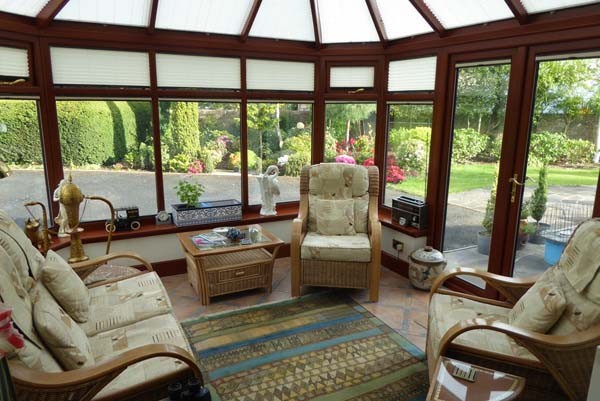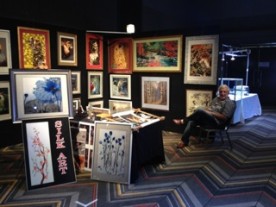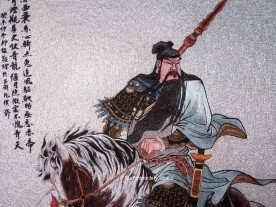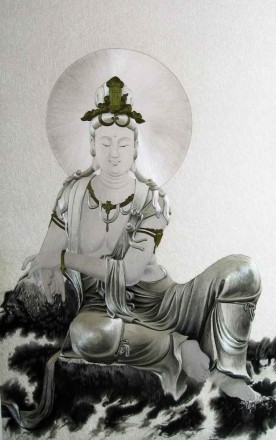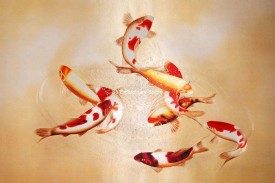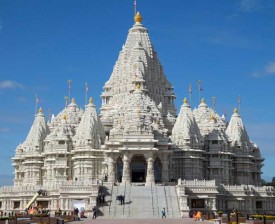A Tribute to Our Friends and Supporters (III)
In the world of art and craftsmanship, it's not just about the masterpieces we create; it's also about the bonds we forge and the kindness we encounter along the way. At Su Embroidery Studio, we've been fortunate to meet individuals who not only appreciate our silk artbut also extend their warmth and generosity, transforming acquaintances into cherished friendships.
Today, we bring you an interview by Classic Stitches Magazine with one such friend, Alan, whose passion for Suzhou Embroideryknows no bounds. Beyond his deep admiration for our artistry, Alan's kindness and selfless support have touched our hearts in ways words can only begin to express.
Our journey with Alan goes back to the Edinburgh Art Festival in 2015, a milestone event for Su Embroidery Studio. During those 15 days, when we showcased our silk embroideries to a global audience, Alan opened his home to us. It wasn't just a temporary stay; it was an experience of unparalleled hospitality and warmth. Thanks to Alan's generosity, our time in Edinburgh felt like living in the embrace of family.
As we share this interview with you, we want to take a moment to celebrate Alan's kindness and express our heartfelt gratitude. His support extends beyond words on a page; it's a testament to the beauty of human connections that transcend borders and cultures.
We post this interview not just for Suzhou Embroidery; it's a tribute to friendship, gratitude, and the remarkable people we encounter on our artistic journey. We hope you find inspiration in Alan's story, just as we have.
Heaven on Earth - Alan's Interview about Suzhou Embroidery in Classic Stitches Magazine
By Esther Read
When Alan McIntyre first saw Suzhou embroidery, he was captivated by the perfection and beauty of the stitches. Since then, his knowledge on the subject and his collection has grown.
In heaven there is paradise, on earth there is Suzhou. This bold claim is one with which Alan McIntyre cannot help but agree. For though he has never been lucky enough to visit China's two thousand, five hundred year-old city, he preserves a little piece of heaven in his Scottish home - in the shape of twelve Suzhou embroideries.
Suzhou is one of the four most famous schools of embroidery in China (the others being centred in Hunnan, Kwangtung and Szechwan provinces).
As Alan explains, One particular Suzhou family, the Ku family produced the embroideries for the Emperors of China, generation after generation. However, by the late Nineteenth century, the tradition was dying out and might have been lost entirely had it not been for the setting-up of the Suzhou Embroidery Research Institute in nineteen-fifty-four to revive and develop the skills of the past.
Seated in the treasure trove that is Alan's sitting-room, it was obvious that I was talking to a man with a passion for beautiful things. Fine furniture and an interesting array of antiques vied for my attention with a striking painting of a woman in Victorian dress, asleep in her armchair. So why include embroidery in his collection? Was he perhaps an embroiderer himself?
Alan laughed at the idea. 'I certainly did a little needlework, mainly tapestry, while in the Army doing National Service but I wasn't terribly good and only developed my interest in Suzhou when we returned to Britain after living abroad.
'A friend worked for Alan Hershaman, owner of Allan's of Duke St. in London, who once featured in Guinness Book of Records of selling the most expensive dress materials in the world. We were to his shop in Duke Street and found that, in the basement, he was selling Chinese pictures and examples of Chinese embroidery, including Suzhou. From that moment, I was hooked. The quality and ingenuity of the pieces just took my breath away. At that point we decided that we'd open our own fine Art and Picture Framing business in Edinburgh and began to collect Suzhou embroideries for ourselves.'
To my surprise, Alan then stood up and lifted down from the wall the 'painting' of the Victoria lady - for closer inspection. This was an embroidery?
'Oh, yes. This is what the Chinese call a cross-stitch embroidery - though it bears no relation to what we know as cross-stitch. Instead, the silks are used rather like a painter might use his brush with the stitches criss-crossing over one another. In fact, the Chinese call the technique needle-painting. Just look at the way in which they've managed to achieve all the gradations of flesh tones. That's because they have six hundred and seventy different shades of colour available to them.'
The effect was quite astonishing and the subject matter very far from what I'd expected of Chinese embroidery.
'There is a bit of mystery there,' Alan conceded. 'This particular embroidery hung in the Chinese National Exhibition for seven years. I assumed that it must have been a copy of a European painting but despite extensive enquiries I've been unable to track down its source. The people at the Tate Gallery suggested that the sitter might have been Russian since China and Russia are in such close proximity so we think of her as 'the Russian Lady' though we have no real evidence for that.'
Cross-stitch embroideries are amongst the most high-prized of Suzhou embroideries and Alan's second example, the Ning Kook pagoda of Nanking shows why.
'Just look at the detail on that foliage,' he enthuses. 'And the way in which the urn in the foreground is made to stand out by being worked in a finer thread.'
Alan Hershman used to visit the Suzhou Institute regularly and he tells me that two embroiderers will work on any given piece for no longer than twenty minutes each, such is the concentration required. Often he's gone back two weeks later and seen no difference in the piece, despite the fact that it's been worked on non-stop!
Such attention to detail is achieved entirely without the aid of magnification - to what good effect Alan shows me in his next pair of embroideries entitled The Emperor's Summer Palace and The Crane Building. I can just about spot that a boat is ferrying some people away from the Palace but I need a magnifying glass myself to realize that two of them are engaged in animated conversation! In the same way, the artist has taken the trouble to depict the barrel-shaped stools which you can just spot through the open doorway to the hallway of the Palace.
'And, of course,' Alan points out, 'There's always a little touch of humor. In China the crane is responsible for carrying off the dead. One is doing just that in the embroidery of the Crane Building but you'll notice that the deceased' pigtail is streaming out, not behind him, but in the same direction as he is traveling.'
Suzhou embroiderers employ around forty different stitches and you can't help but wonder which they've used to create the perfectly flat horizontal slats of wood on the crane building or the wooden carvings of animals' heads on the roof.
The muted colors of both these pieces is a further surprise, just as it is in the stunning Baby Cranes in the Pine Trees.
'Such subtlety is very much the hallmark of quality Chinese embroidery - in contrast to the more garishly-coloured poorer quality products,' Alan declares.
Just as I am beginning to feel that in a world this rich there can't be any more riches, Alan proves me wrong by producing a portrait of a cat (a very typical Suzhou subject). If the Russian lady was a painting, then this is surely a photograph. I see the way in which the light catches the animal's fur and can barley resist reaching out to stroke it. And how could anyone possibly stitch those wisps of fur or recreate the moisture in the corner of the cat's eye?
'Magnify a slide of the eye on a six foot screen and it's still as good,' Alan assures me. I can believe it. 'Suzhou artist, using a sharpened thumbnail, can split the already hair-thin silk into filaments as fine as one forty-eighth of the original and it is this that allows them to achieve such a fine and accurate representation.'
As my final treat, Alan now produces his only example of a double-sided embroidery, a technique which has been crafted to perfection by the embroiderers of Suzhou. Displayed in a circular rosewood frame, the embroidery shows a bird perched on a tree in blossom, with a butterfly overhead. This scene is replicated exactly on the reverse of the cloth - rich down to the butterfly's flimsy antennae.
'Just think of the precision of that,' Alan comments. 'The embroiderer will first stitch one side then turn over and cover the same area in exactly the same way. In other examples, they actually vary the scene, showing it in springtime on one side of the cloth and in autumn on the other! My daughter once saw a truly amazing example with a dog on one side and a cat somehow fitting into the same outline of the other.'
There's another ancient Chinese saying which states that 'When Suzhou produces everyone has enough.' Having seen Alan's collection, I beg to differ. How could anyone ever have enough of such consummate skill and sheer beauty?
Su Embroidery Studio (SES), Suzhou China
SES is dedicated to Chinese Silk Embroidery Art and High-End Custom Embroidery
Find SES's embroidery at Chinese Silk Embroidery for Sale


